An HSJ roundtable – sponsored by NHS England – brought together people with different perspectives to consider the Care.data initiative and how information can be collected and used to improve healthcare provision. Alison Moore reports
The panel
Joanne Bailey, member of BMA GPs committee and chair of the GP extraction service independent advisory group
Mike Bewick, deputy medical director, NHS England
Phil Booth, coordinator medConfidential
Peter Carter, chief executive, RCN
Cynthia Clark, communications director, Patients4Data
Lucie Harper, UK health managing director, Weber Shandwick
Tim Kelsey, NHS England national director for patients and information
Alison Macfarlane, professor of perinatal health, City University and member of the health statistics user group
Alastair McLellan, HSJ editor – chair
Libby Morris, GP and member of RCGP health informatics group
Jeremy Taylor, chief executive, National Voices
The importance of data in driving forward improvements in healthcare is beyond dispute but there can be few more contentious issues than how that data is collected and used, and who has access to it.
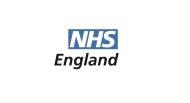
NHS England’s Care.data scheme – which would allow the linkage of patient level information held by GPs and hospitals – was paused earlier this year, amid concerns about privacy and the use of information by third parties. But where should it go from here and how can these concerns be alleviated, while ensuring that the benefits of such a programme are delivered?
HSJ editor Alastair McLellan, who chaired the debate, began by asking: “Care.data has had a difficult birth. Why are we going through this pain? What are we trying to achieve?”
‘It will drive better care, more consistent care with fewer variations and will fuel research, which will lead to better treatments and better care’
There was agreement that better use of data offered many opportunities and could bring benefits for patients. Jeremy Taylor, chief executive of National Voices, said data about patients and their treatments, and the outcomes of this, currently existed in lots of different places. “If we can join together the different data bases then we have an opportunity to have a richer understanding of the services and the impact on patients,” he said. This would aid research and improve services. “The benefits of doing so have been proven… the controversy arises when people ask: ‘How is it going to be done and who has a say.’”
Patient questions
Deputy medical director of NHS England Mike Bewick said there were many questions from the patient’s perspective – did it make care safer, more integrated and easier for doctors to make decisions and support patients’ families, and did it improve research and commissioning decisions?
And there was support from healthcare professionals who could see the potential benefits. British Medical Association GPs committee member Joanne Bailey could see much that GPs would welcome, such as more data about what had gone well for patients and the potential for risk stratification of patients.
Royal College of Nursing chief executive Peter Carter said: “There is a lot of data out there but it is not particularly joined up. It is difficult at any given time for any organisation or any individual clinician to have a comprehensive understanding of what is going on.” Data could inform commissioning decisions and help spot trends. As an example of where data can help uncover issues, he said men in the East End of Glasgow had a life expectancy of 54, compared with 86 in some parts of Hampshire.
Alison Macfarlane of City University thought there could be enormous benefits from using health statistics at a population level – but highlighted the difficulties public health researchers already had in accessing data. Adding GP data would help provide insights into side effects of medication, for example.
Many countries that were good at using health data had relatively small populations – such as Scotland, Wales, the Nordic Countries, and also Western Australia and British Columbia. In a country the size of England, there would be opportunities to look at rare conditions as well as the more common ones. As an epidemiologist she would be able to see minor complications of medications used over a wide population – such as statins – which would offer huge potential.
‘Practices get an awful lot of requests for that data. It is very difficult to decide what is appropriate and what is not’
Cynthia Clark, communications director of Patients4Data, summed up the benefits succinctly: “It will drive better care, more consistent care with fewer variations and will fuel research, which will lead to better treatments and better care.”
But some panellists highlighted the need to overcome some of the issues that come with increasing linkage and use of data. Phil Booth, co-ordinator of medConfidential, said: “I would like to inject that this is an opportunity for us to ensure that data collected and used is done so in a safe and consensual manner. The effective use of the data involves engaging the patients and letting them understand what is happening with their data across the NHS. That may be a conversation that has not happened yet.”
Security concerns
GP Libby Morris highlighted some of the issues with data that is already collected at practice level. “Practices get an awful lot of requests for that data. It is very difficult to decide what is appropriate and what is not. The easy answer is just to say no to everyone,” she said. GPs needed reassurance about security, she added.
Tim Kelsey, the man responsible for the implementation of Care.data as NHS England’s national director for patients and information, saw the programme as delivering different benefits over different timescales. He said: “Right now, it is about improving quality and safety of services.” Then there were issues around the planning and commissioning of care in the future and making services work better for patients. “We cannot plan for services because we don’t have the right data.”
In addition there are research opportunities the data would lead to, and the impact of genomics. “It is making sure that in our health services we do give our patients and citizens the opportunity to participate in the genomics that are coming,” continued Mr Kelsey.
‘There are risks in this big data world where it is not just the identifier at the top – the NHS number etc – but other elements within the health record make it more identifiable than had been assumed’
Mr McLellan suggested there was a level of shared understanding around the table but he acknowledged that security was a concern, and asked Mr Booth to outline the issues and what he felt was needed to ensure that these concerns were being met.
Mr Booth said that medConfidential’s concerns had predated Care.data. “There are risks in this big data world where it is not just the identifier at the top – the NHS number etc – but other elements within the health record make it more identifiable than had been assumed,” he said.
medConfidential has proposed that rather than passing out chunks of this very rich data there is a “lock down” in a secure facility where the data can be accessed. “This is becoming best practice for the handling of sensitive data,” Mr Booth said, adding: “People who are going to have access to this have to go through a process of approval.
“Another of the elements is that when something does go wrong there needs to be disincentives in place. When people have done things they are not allowed to or broken the terms there has to be a way of saying ‘right you really are not going to get the data’.”
Professor Macfarlane pointed out that researchers already spent a great deal of time applying for permission to access data and had to go through a complex process which included ethical committees. “We are fairly gutted when we see irresponsible use by the private sector,” she said. And she highlighted how difficult to could be to get data when the Office of National Statistics had made huge cuts.
Security to get some of this data was already very tight with the need to get approved researcher status and then book a terminal. “When you go in there you can’t be taking your laptop in and send emails. You can’t write anything down from the screen,” Professor Macfarlane said.
It could also take a long time for researchers to get access to data – she had been waiting six months for the Health and Social Care Information Centre to “disgorge” data. One thing which would improve the process was an integrated approach so there is a common form which served for the different permissions needed which could reduce the form filling needed.
Privacy issues
Mr Taylor said: “The vast majority of the population are broadly in favour of the aims behind care.data. But there are a number of important objections.”
He suggested there were five key areas of concern to patients. “I have no idea what information you have got on me,” he said. “I have no idea who is going to see it. I have no idea what the hell they are going to do with it. I don’t trust you not to use it. And I am the only person at my GP practice with condition X or circumstance Y – so whatever you say about anonymity, I will be easy to identify.”
There was a need to come up with a system that had counter arguments to all of these, he added.
Mr Carter pointed out that there were a number of other privacy related issues that were running in parallel with the development of Care.data such as Wikileaks and the revelations from US whistleblower Edward Snowden. There were impacting on public perception.
“There is a lack of trust around that is stopping people cutting through and seeing the benefits,” he said, adding there was a need for a coalition of people to agree some rules and safeguards.
As a marketing expert, Lucie Harper – UK health managing director at Weber Shandwick – had suggestions around communication with the public. “When we talk about communication within the general public one of the challenges is that we lump the public together as one homogenous group.” She highlighted that there are generational gaps around the willingness to share data through technology, with 20 somethings being willing to share everything online while those in their 40s and older having more concerns about this.
‘There is a lack of trust of trust around that is stopping people cutting through and seeing what are the benefits’
“We should consider dividing this into age groups and what resonates with them – what are they concerned about or not concerned about?” she suggested. This could range from people feeling that they wanted to contribute something to society or those who were concerned about their own health. Working with people who believed it would have benefits could lead to a wider influence among their peers.
“It does not feel very organic or something that we are doing together and that will benefit us,” she added. “When a campaign or a communication does not feel organic or it feels as if it is being done to people rather than [them] being part of the solution, sadly I think that is where agendas get hijacked.”
Public assumption
Mr McLellan pointed out that the public tend to assume data is already shared around the NHS – a point taken up by Dr Bewick, who said that even five years ago patients with long term conditions were shocked that he did not have all the information about their care to hand to help him manage their condition.
He suggested that most patients were happy with shared data when it led to improvements and led to insights into the factors that influence disease.
Dr Bailey agreed that patients were often surprised there was not more linkage of data but this was around using data to inform their own care, rather than sharing it more widely. GPs were concerned about any impact on the doctor-patient relationship. “What GPs don’t want to happen is that patients start to get concerned about what they say to their doctors.”
GPs were legally data controllers and have to ensure patients know what will happen to their records, she added. “GPs are saying that the only way to do this is to have an opt-in system… I know that is controversial. The government should be supporting practices in informing their patients rather than adding to the burden on general practice.”
Dr Morris said it was vital to distinguish between the use of data for direct clinical care and data for secondary use. “It is really important that we don’t make blanket statements about what people want. Just because young people use Facebook does not mean they want their personal details shared through Facebook.”
‘What GPs don’t want to happen is that patients start to get concerned about what they say to their doctors’
Professor Macfarlane made the point that some of the recent worldwide issues around data protection had shown “it is not impossible for the wrong sort of people to hack in and do dastardly things”. However, professionals worked under a strict code of practice, which more people needed to be aware of.
Mr Taylor added: “I think we talk a lot about things where we can see the harm to individuals. If people hack into the data and my health records are on Facebook there’s a clear harm to me.”
But he suggested there was also harm when data was not shared – but this was harder to see if, for example, research did not progress as it might have done.
“It leads into the question about communications in that we need something strongly positive to balance out the fears about security.”
Responding to these points, Mr Kelsey said: “We are planning a very detailed and hopefully thoughtful communication strategy.” It was established that it was the patient’s data and they had an absolute right to determine how it was used, he said.
“We know that opt in would not deliver enough data for those who need services most or use them least. That does not reduce the requirement for a really effective communication programme.”
Protection against misuse
This was new territory for the NHS but new protections had been agreed in principle, but not in detail. “I think we will have a very detailed set of rules in relation to use of data with real sanctions for those who misuse and that prescribe the use of sealed safe havens,” Mr Kelsey said. The patient’s decision would be at the heart of this.
“It is an opportunity to be really open and to learn from mistakes,” he said, though he added this did not always feel comfortable.
“Now the task is to go out with a small number of CCGs and work with them on this,” he said. “I believe there is a real willingness to get this right and what we must be careful to do is not to rush it.”
‘I think we will have a very detailed set of rules in relation to use of data with real sanctions for those who misuse’
Mr Booth commented that he could see signs of positive progress. “We are encouraged by the direction of travel but continue to have concerns,” he said. “We think one of the things which is absolutely essential for this to happen is that we have to look for ways in which people can be informed about what is being done.” If data was being shared, there should be a way of letting the patient know that, he added, not just in terms of broad statements but people needed to know that that their data was being used and was developing knowledge for the public good.
Mr McLellan wondered how this might work – would it be through an email every time there was some kind of secondary use involving a patient’s data?
Mr Booth suggested a system that was “auditable the whole way through” could help build confidence with GPs and patients. “It would be nuts to be sending off millions and millions of emails,” she said but some sort of summary might be possible. “Maybe the GP is the interface and needs to have that information fed back to them.”
Mr Kelsey outlined some of the next steps. Four CCGs had expressed an interest in being pathfinders in introducing care.data and others were interested. “We can’t do this with thousands of GPs’ practices. The idea is to limit it to about 500 and develop and test materials with them.”
A personal communication of some description was essential but this would need to be supplemented with a range of other marketing material. Some data could start to flow in the New Year if work with the pilots was carried out in November.
“The idea is that we would start to look at the first linked data files and point to the benefits even on a very small scale there and then,” Mr Kelsey said. “There are various success criteria we have spent a long time discussing with a variety of colleagues.”
After this, the plan would go through further phased roll outs nationally.
Mr McLellan asked where pseudononymisation of data should take place – should it be within a GP practice? However, Mr Kelsey said the risks were no different if the data was held within a practice or a large dataset. It was planned to do it within the safe haven.
Control of own data
Mr Kelsey said there would be a need for the individual to engage much more fully in a wider range of ways with health and care services. He wanted people to take control of their own data – through access to health records, for example.
“We need to develop an approach that is fully transparent with the citizen about what their data is being used for. As we get to a point where that is just a normal part of doing healthcare the costs will decrease.
“We are looking at how we can use the techniques that are widely used in other parts of our life to keep us engaged with our healthcare. This is a pretty complicated process. There will need to be some level of national investment.”
Professor Macfarlane said there had been work on user engagement in other parts of the UK and it would be a shame to reinvent the wheel. She questioned people’s understanding of where electronic data was stored and whether they thought it was kept next to the Lloyd George envelopes in their GP’s surgery.
‘We are looking at how we can use the techniques that are widely used in other parts of our life to keep us engaged with our healthcare…. There will need to be some level of national investment’
Mr Kelsey said he had attended a patient participation group in Leigh where there had been real confusion about the safety case, but by the end the members were angry that the scheme was not progressing faster. “At the beginning of the conversation they did not realise their data was not being held anywhere near Leigh. But the technical issues did not predominate. They just wanted to get on with it,” he said.
There was a conundrum, he said. People were positive about their data being shared for the benefit of the NHS or health and care but were concerned that the data might be used by private companies outside that space.
And when people were asked about research, the pharmaceutical industry was not much regarded by the public. “The life sciences industry needs to rethink its message. It is partly a reflection of a public anxiety that may be misplaced.”
Possible solutions
So what could the panel offer as solutions to some of these issues? Mr Carter said that within the communications strategy there was a need for buy in from a lot of people including the medical royal colleges, nurses, physiotherapists and so on. “It will help the cause if people can make a declaration that they support it,” he said. “I would advise you to keep politicians as far away as possible. People don’t trust them.”
But he added that the level of understanding of the issues among nurses was still quite low, but the RCN had the ability to reach hundreds of thousands of nurses overnight. However, he warned if things went wrong this time “it would be hard to have a third bite of the cherry.”
Dr Bailey urged small steps. “The only way to find out what is acceptable and what is not and what people consider to be the NHS… is to try it and see. I think there are merits in taking small steps.” Mr Taylor stressed the importance of GP buy in. “If your GP says it is a good thing and is safe, and will work, that is the best way to overcome it.” And he suggested there was a case to stop calling it Care.data and stop calling it a programme and start seeing it as a continuum – something which Ms Harper agreed with, saying the name “felt a bit scary”.
But Mr Taylor also had a suggestion about how any harm could be rectified: “If the system does screw up and loses your data or it is inappropriately shared it can be very damaging. I think there is something about how you compensate people for that loss.”
‘The only way to find out what is acceptable and what is not and what people consider to be the NHS …is to try it and see. I think there are merits in taking small steps’
Dr Bewick added: “It is about getting a critical mass of doctors to sell this to the people who are most concerned about it.” He suggested in the short term there were many elements which would appeal to people but overcoming some of the myths around the pharmaceutical industry would take longer. Dr Morris urged a “cascade” approach, starting with people at the top.
Mr Booth said his organisation had been contacted by many practice managers and GPs this year because they did not know what was going on. He suggested the programmed needed to be “deconflated” with clarity about what was being done at what stage. Discomfort started to slip in when pharmaceutical marketing was involved, he suggested, and there was a need to convince people who felt thresholds were being passed. Only if these people were convinced, would there be population buy-in with only a tiny minority opting out.
But Mr McLellan asked whether taking things slowly could lead to the NHS being left behind by groups of patients who were keen to share data for themselves. “That is more prevalent in the US but it does seem to me that there is a danger that the NHS in some areas could be overtaken by groups of patients.” Mr Taylor said: “It is not either or… The NHS does need to get its act together on sharing data but everyone should celebrate the fact that groups of patients are getting together to share knowledge.”
However, Professor Macfarlane pointed out this could lead to unrepresentative samples and the danger of bias.
Ms Clark said there were dangers in taking the introduction of shared data slowly as there were urgent needs – such as around safety – where sharing data quickly could have an impact.
Mr McLellan asked why people seemed to be willing to share other data – such as when they used internet banking – but were more concerned about health data. Mr Taylor pointed out that online banking offered a very strong benefit to the customers. “People were very sceptical about it but now they see the benefits. Having access to your health records is similarly useful.” But at the moment people could not see those benefits.
Dr Morris added that people told their GPs and other healthcare professionals extremely sensitive things which they would not tell their banks. “We need to be really clear and not overegg it and promise the earth.”
Ms Harper pointed out that the benefits of shared data might be different for different age groups and this needed to be reflected in how it was communicated. “A generic programme will end up resonating with a very small group of people,” she warned.
On building trust in Care.data
Data is an increasing part of all our lives. The scale of growth in data can feel overwhelming, even threatening. Around 90 per cent of the world’s data is less than two years’ old. But the opportunities for using data to improve our healthcare provision – improving and saving patients’ lives – are immense.
The problem is that our hospital data is not joined up with information from GPs or other services in the community or in social care. We lack basic and vital insights into how the primary and secondary care sectors work together – and how the patient outcome can be improved. Why are one in four people diagnosed in A&E with certain kinds of cancer – with much reduced life expectancy – when, in many cases, their disease might be discovered earlier in general practice? We need to link data to understand how people can be treated as well as possible.
The care.data initiative aims to tackle this by linking coded patients’ data from GPs with hospital data. This will let us map diseases quickly, understand patient journeys and see the outcomes of their treatments, so we can manage resources more effectively, commission new services and drive up standards of care across the NHS. In the longer term, this data could be used successfully by researchers to help develop new treatments and therapies. Care.data is an evolution of the way in which we have used hospital data for more than two decades – this was instrumental in helping identify outlying death rates at Mid Staffs, for example: we know it is a key asset in surveillance and reduction in harm.
We delayed Care.data in the spring because people were confused about its benefits and unsure about its safeguards. We were not clear about those things at the time, nor about the potential risks of data sharing. Much has happened since then, including new laws to ensure statutory oversight of the data and full transparency of its uses. But we don’t underestimate how much more we still need to do.
The feedback from our listening exercise has been invaluable: People generally think our ambitions are laudable; but we need to communicate with patients and address the concerns about the security of patients’ data.
That’s why we are now working with CCGs to develop and test materials that will inform patients about the aims of this data sharing initiative, show the steps we are taking to protect their coded data, and explain that they can opt out. We will do this before we decide to extract data from these pathfinder GPs and link it to hospital data. And we will be open and transparent so that we can show people how we have heard their concerns and are managing their data carefully.
We know that we need to build the trust of health professionals and patients slowly. We know we need to show that we are managing their data with respect. That’s why we are determined to work through the issues, test out different approaches and ensure that we get this right before we extend the programme across the country. There are no artificial deadlines.
Tim Kelsey is national director for patients and information at NHS England




















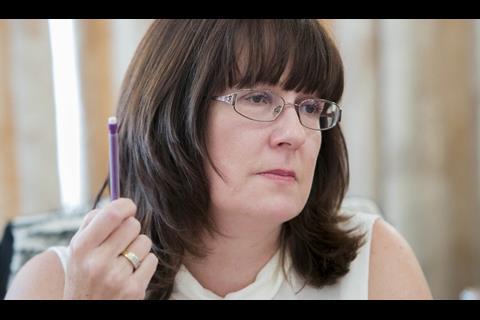
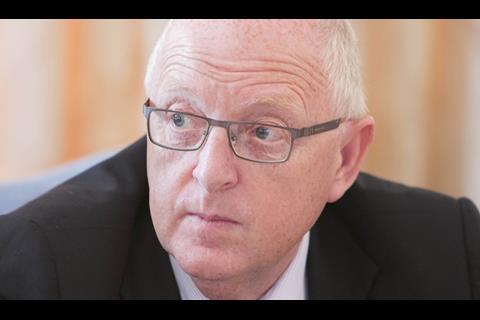

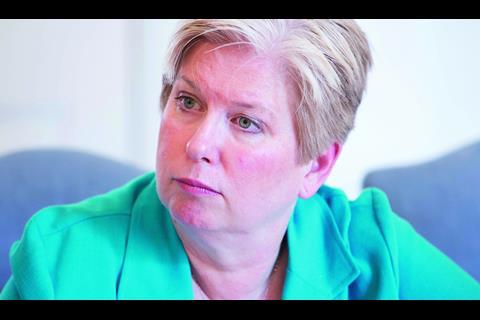
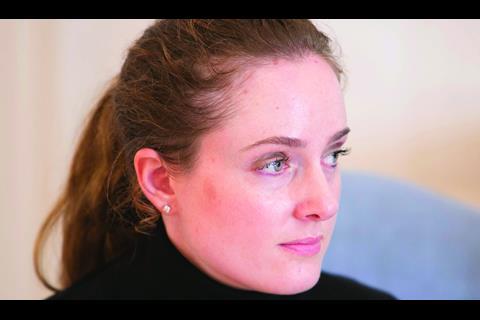
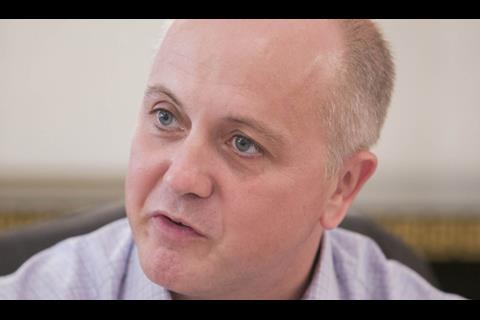
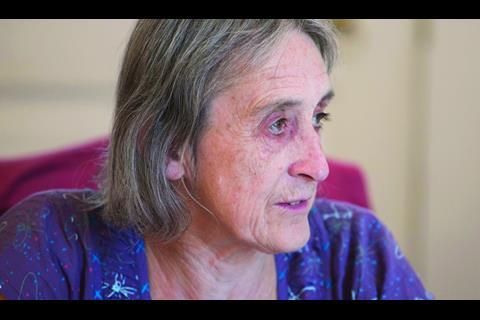
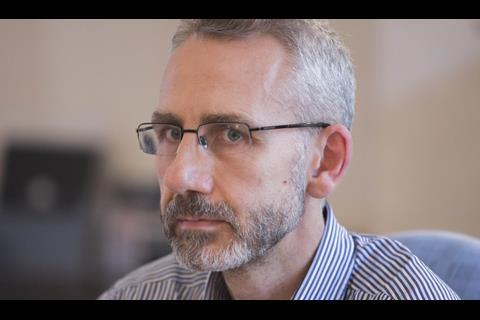
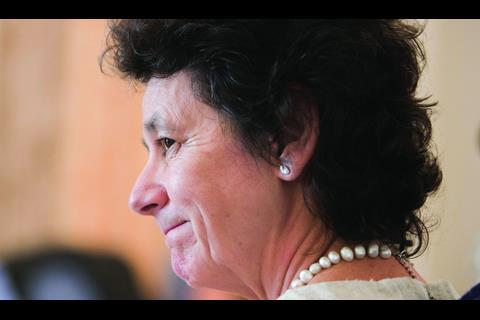
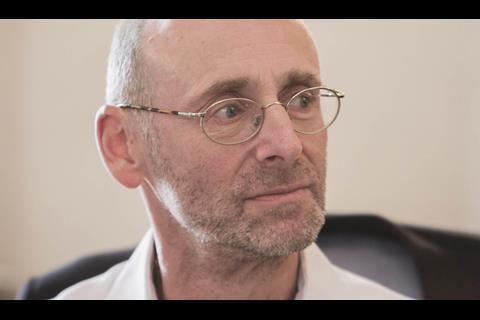






3 Readers' comments